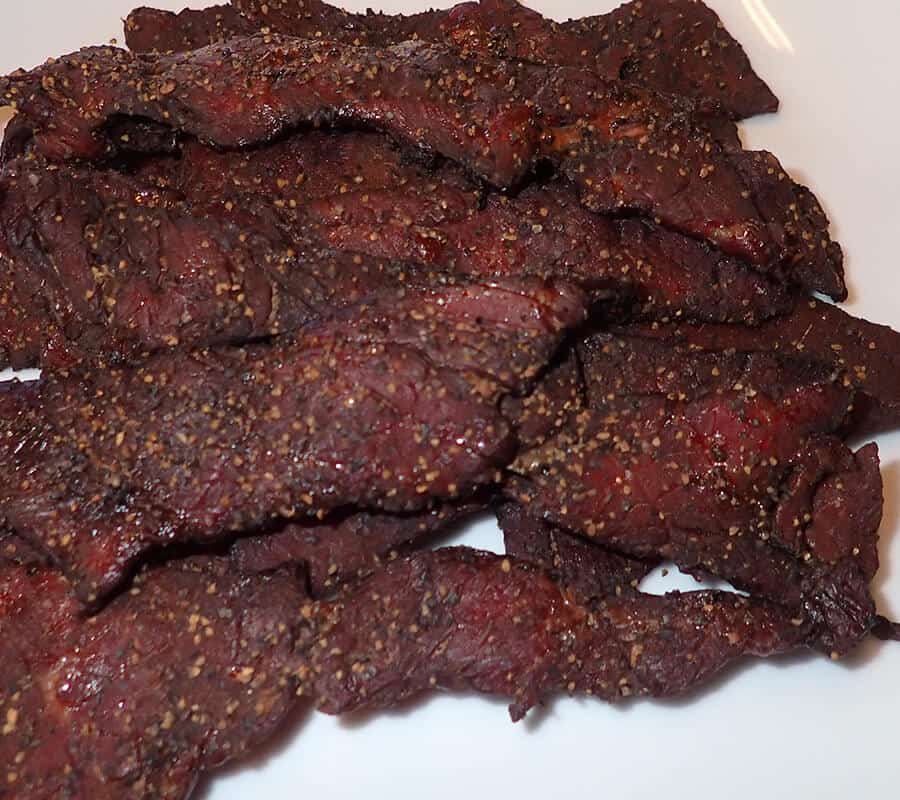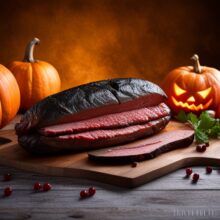Smoking Beef Jerky

Smoking beef jerky can be a great way to preserve and enhance the flavor of your meat. It can also be a delicious and healthy snack!
Jerky can be made with a variety of different proteins, including beef, pork, turkey, and fish. It’s best to opt for leaner cuts of meat, which can help keep total fat content low and calories down.
Preparation
When making jerky, you must be careful to cut the meat into strips that are uniform in thickness. This will ensure that all of the strips cook at the same time and dry evenly.
Choose a lean cut of meat, such as beef, pork, or lamb. Trim any visible fat before cutting the meat into strips, as excess fat will make the jerky spoil quickly and will give off “off” odors during the drying process.
Slice the meat into strips 1/8-inch thick. You can also slice the meat across the grain, which makes the jerky easier to chew.
Once the meat has been sliced, rub all surfaces with a cure mixture that includes curing salt and seasonings. Store the cured strips in airtight jars or plastic bags.
If you are making jerky from wild meat, it is important to cure it before drying or smoking it to kill bacteria that can cause illnesses like botulism. Curing also prevents gamey flavor and helps reduce the risk of fecal infections from game animals.
Smoking
Smoking beef jerky is an easy way to preserve and enhance the flavor of your meat. But you need to know how to do it properly.
First, choose a lean cut of meat. Avoid fat because it goes rancid quickly and makes jerky tough to chew.
Next, slice the meat into thin strips using a home meat slicer. The strips should be cut against the grain for a chewy texture and good beef flavor.
After slicing, marinate the sliced meat in a simple jerky marinade. We use a soy sauce and Worcestershire mixture, but you can also use a spice rub or other ingredients that appeal to you.
After soaking in the marinade, lay the beef slices on racks and place them into your smoker. Set the smoker to 180 degrees F and smoke for about three hours. Check on the meat every two hours to make sure it’s drying evenly. If it’s not, reposition it and add more wood chips.
Cooling
The cooling process of evaporative drying helps to preserve the meat’s taste and texture. It is also important in preserving the integrity of the protein and prevents the oxidation of fat.
Beef jerky is an excellent source of protein and many other important nutrients, including zinc, which is a micronutrient that regulates immune response, and iron, which has been linked to energy levels. It also contains potassium, which is essential for heart function and muscle contraction.
It is important to choose lean beef cuts when making jerky because excess fat can cause spoilage and make the meat tough and chewy. Two popular cuts are top round and bottom round, while sirloin tip and flank steak can be good choices as well.
Storage
Jerky is a popular and healthy snack that is easy to make and can last for months or even years. But if you store your jerky improperly, it can be unsafe to eat.
When it comes to storing beef jerky, the main thing to remember is to keep it in a dry place. This will help prevent mold from growing.
If you plan on storing your beef jerky for a long time, consider vacuum-sealing it before storing it. This method is the best way to prolong its shelf life and maintain its flavor.
Paper bags are also a good storage option for short-term beef jerky storage of a week or less. However, be sure to seal them tightly so that air can’t get in and microscopic pathogens can’t escape.
Read more great BBQ articles at Bob's BBQ Tips



